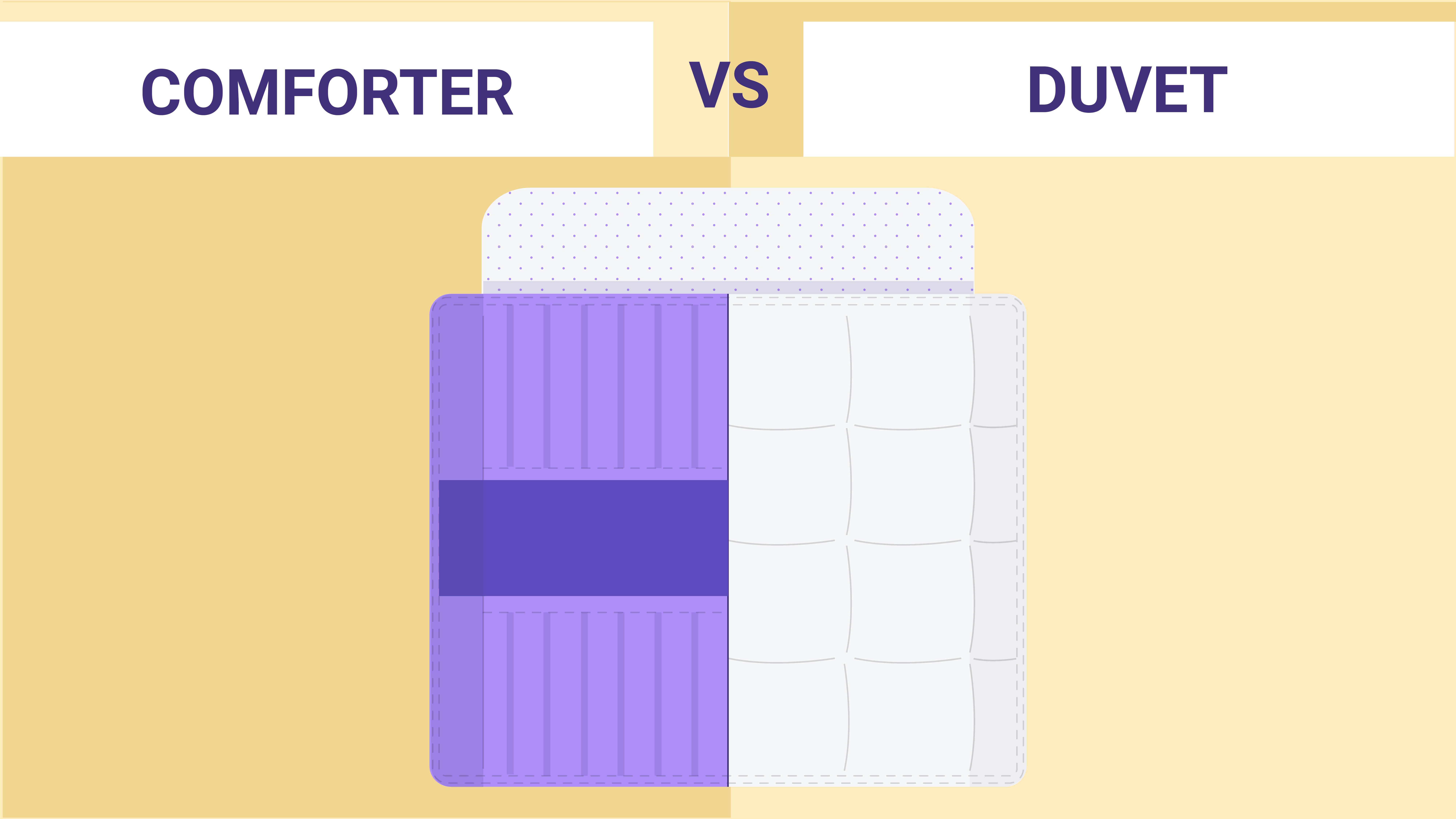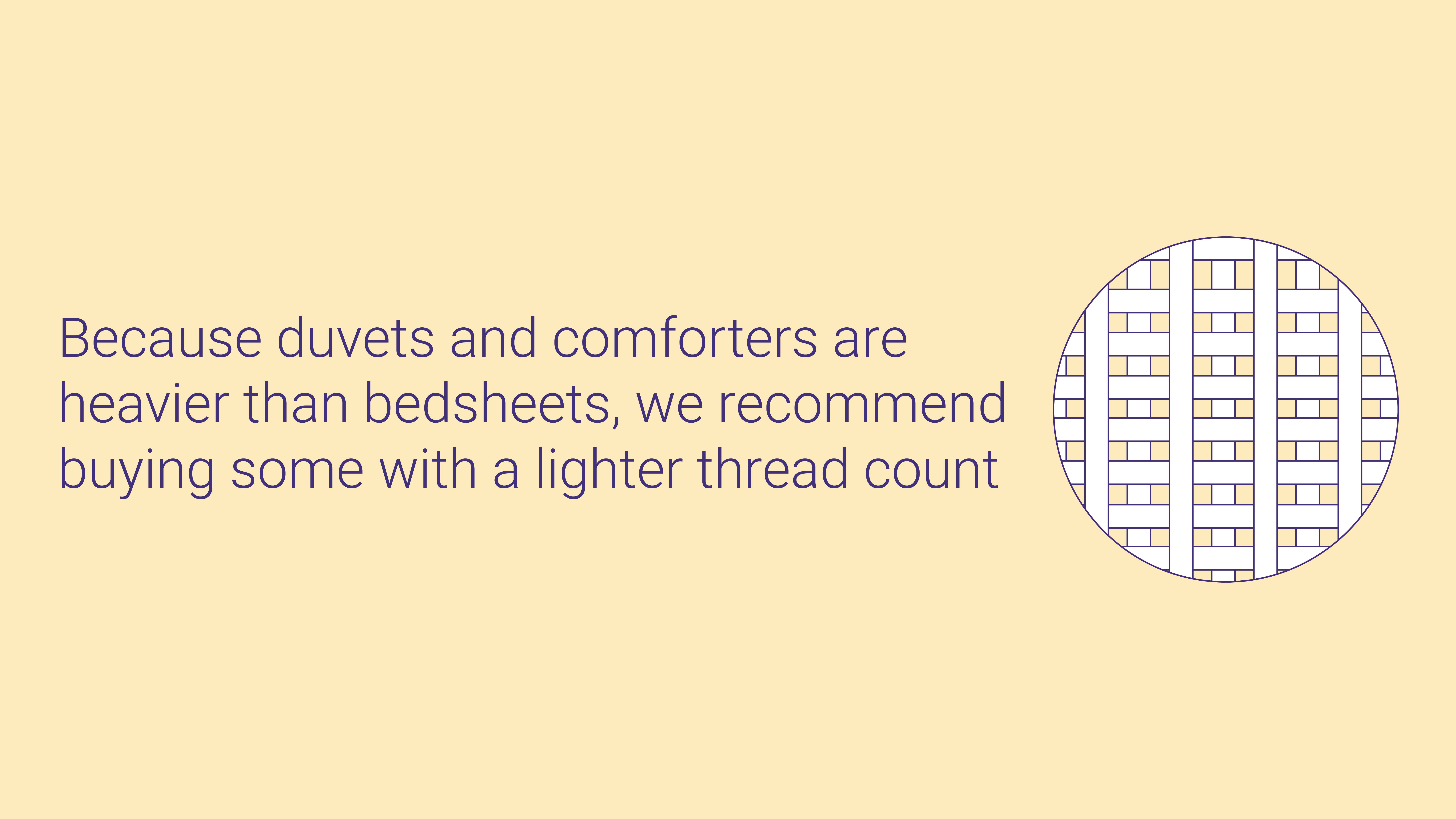
Duvet vs. Comforters

Lots of us confuse duvets and comforters, but they’re quite different from each other. For instance, duvets are meant to be bought with a cover, whereas comforters usually come in a “bed in a bag” that includes pillowcases and sheets. Duvets are easier to clean, while the thickness of a comforter makes maintenance more of a hassle. Both duvets and comforters are a type of blanket meant to keep sleepers cozy and warm.
In this article you will find information on both duvets and comforters to help you decide which is best for your needs. These warm blankets can make or break your sleep each night, so picking the right one requires careful consideration.
What is a Duvet?
Duvets originated in France, where the word “duvet” translates to “down,” or the soft, fluffy feathers found under a bird’s wing. A duvet is a quilt-like blanket meant to sit on top of your sheets. Duvets are thinner than comforters, although they’re made with similar fill materials including wool, cotton, polyester batting, or down.
Duvets are usually a neutral color, such as white or cream, but most people put a cover over their duvet, which can be many different colors and designs. You can coordinate duvet covers with bedroom accents to make your room more inviting and comfortable for sleep.
Pros of Duvets
The “fill” goes inside the duvet and is most often down feathers, but it can also be synthetic down, polyester blends, wool, and more. Some duvets even feature specialized fabric that wicks away moisture and promotes blood circulation.
Duvets are generally low-maintenance, especially if used with a cover. When it comes time to clean your duvet, all you need to do is remove the duvet cover and place it in the wash.
Cons of Duvets
Finding the right cover to protect your duvet can be difficult because covers come in a lot of colors, patterns, and styles. Plus, sometimes the duvet will shift around inside, causing bunching. You can prevent this by buying a duvet with ties in each corner to secure the fill.
Duvets are usually more expensive than comforters after you account for the additional cost of buying a cover.
What is a Comforter?
Like duvets, comforters are blankets meant to sit on top of your bed. Comforters are typically thicker than duvets and filled with down, wool, cotton, or blends. Comforters feature a sewn-on outer shell, so there is no need to purchase a cover. However, some sleepers choose to pair their comforter with a cover at one point or another for added protection or just to change up the style of their bedding.
If you’re shopping on a tighter budget, you’ll appreciate the value of a good bed in a bag set, which not only includes a comforter with a cover, but also sheets and sometimes pillowcases, too.
Pros of Comforters
Comforters can be the more economical choice compared to duvets because they come in a set with other bedding. A comforter’s unique sewn-on cover ensures even distribution of filling in the comforter which means no shifting and bunching.
Cons of Comforters
Comforters require special care when it comes to cleaning them; their bulk means it is difficult to dry them and they may lose their fluffiness in the wash. While comforters can be machine washed, larger comforter sizes don’t usually fit in a standard washer and dryer, so you might have to take them to the dry cleaner occasionally.
Because comforters come with a sewn-on cover, it is harder to change styles. You can still put another cover over your comforter, but you have to ensure it’s big enough to obscure the design of the old comforter.
How to Decide Between a Duvet or Comforter
Important factors to consider are fabric type, thread count, style, and pricing as these are impacted by your sleep needs, such as body temperature and climate.
Fabric Type
Duvets and comforters are available in cotton, bamboo, Tencel, cotton, silk, and polyester blends. With a wide variety, there is sure to be something for everyone’s needs. Flannel is the best bet for cold sleepers, and sheets with lower thread counts are the way to go for hot sleepers.
Thread Count

Because duvets and comforters are heavier than bedsheets, we recommend buying some with a lighter thread count—shoot for something between 180-300.
Maintenance
Duvets are easier to maintain because the covers are easy to remove and wash. The cover also extends the duvet’s lifespan because they can be replaced if they get worn down.
Most comforters can be cleaned in a regular washer and dryer; however, comforters tend to be harder to properly dry. Because of their bulk, they usually do not dry evenly and can lose their fluffiness.
Pricing
A duvet can go for $60, while the cover might retail for around $100, making its total price higher than the average comforter. A comforter can range from $30-$200, depending on the material and brand. The cost is dependent on the material and thread count—synthetic materials and low thread counts typically cost less.
FAQs
Do I need a duvet cover?
While you technically don’t need a duvet cover, we highly recommended using one to protect your duvet from wear and tear. Covers also add a nice decorative touch because they come in so many colors and patterns.
How should I wash my comforter?
Always check the tag before cleaning a comforter to make sure it is machine washer safe. There usually are care instructions on the tag; if there aren’t, use the delicate cycle with cool or warm water. Washing the comforter on its own is always your best bet to ensure even cleaning. A good hack to restore its fluffiness is to dry it with a couple of tennis balls, take the comforter out of the dryer every half hour, shake it, and put it back in until fully dry.
Why is my duvet lumpy?
Sometimes the material in a duvet can shift around and cause lumps since it isn’t tied down or quilted. The best way to get rid of the lumps and get your duvet back to normal is to shake it out a couple of times, lay it flat on the floor, and run your hands over it.
Can I use a duvet cover on a comforter?
Using a duvet cover on a comforter is pretty common because people like the extra level of protection. The trick is to use a cover with an opaque fabric so the old design doesn’t show through. Sometimes, companies even sell covers specifically for comforters. When buying, make sure the dimensions of the cover match your comforter.
What is the best material for my duvet cover?
The most breathable cover fabrics are cotton, Tencel, bamboo, and cotton blends. Silk has a luxurious feel but keeps you warm, and it is great for people with allergies because of its dust repellent properties. Polyester and microfiber are durable and the colors won’t fade over time. Your best bet for a warm, long-lasting, and breathable duvet cover is one made of polyester-cotton blend.
Conclusion
Duvets and comforters are versatile blankets designed to keep you warm and comfortable.
There is sure to be a perfect fit for everyone, whether it’s silk or cotton. Before heading out to get your own, think about the kind of sleeping environment you want, whether it is warm and cozy or light and cool.
